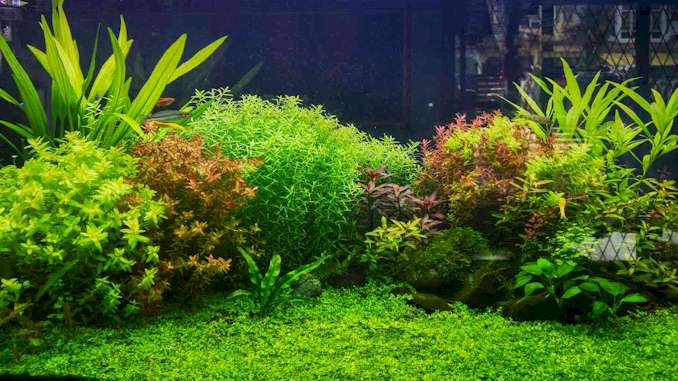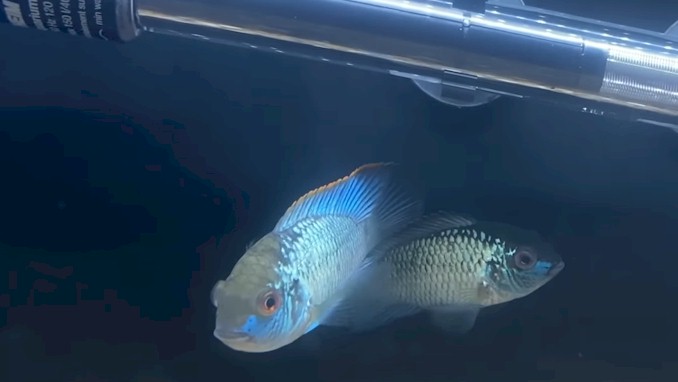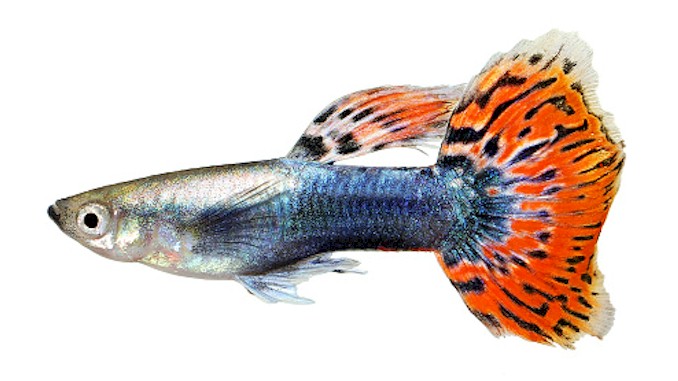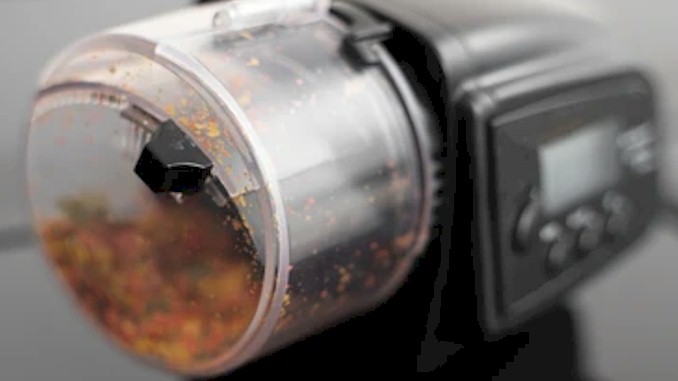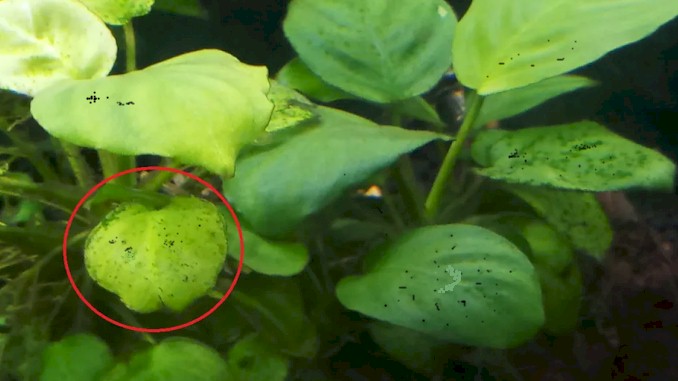Best Fish Tank Glass Cleaner – Reviews and Buyers Guide
I have a fish tank. Not long after I got it, I needed to clean the sides of the tank. I needed a fish tank glass cleaner. I didn’t know what the best ones were, so I searched Amazon to find out what the best ones are.
Below is a table that will tell you what the best fish tank glass cleaners are:
| Product Photo | Product Name |
 | Jasonwell Magnetic Aquarium Algae Glass Cleaner |
 | Mag-Float Glass Cleaner by Gulfstream Tropical |
 | Aqueon Aquarium Algae Cleaning Magnet |
 | FL!PPER Standard 2-in-1 Magnetic Aquarium Tank Algae Cleaner |
 | API Algae Scraper for Glass Aquariums |
Each of these fish tank glass cleaners has some advantages and disadvantages. Now I’ll talk about each filter in detail so you can find which one is right for you.
1. Jasonwell Magnetic Aquarium Algae Glass Cleaner

Pros
- 2 year warranty; 2 year money-back guarantee
- Floating brush if it drops into the water
- Very strong magnet reviews
- Attractive shape and blue handle color
- Strong, velcro-like scrapers
Cons
- Have to make sure you’re getting the right size for your tank or it won’t work well
- Hard to get into the corners
The Jasonwell Magnetic Aquarium Algae Cleaner is a popular choice for an algae cleaner. Not only is the magnet very strong, but the inside piece floats, so if it becomes separated from the glass it’s easy to find and retrieve.
This cleaner is made only for glass tanks and comes with two types of attachable scrapers: stainless steel and plastic.
The Jasonwell comes in four different sizes: small, medium, large and x-large, with the x-large, specifically made for tanks with a glass thickness of ½” or more.
The whole cleaner is an off-white color, while the handle has a nice, electric blue, non-slip grip hand pad for comfort and maneuverability. The handle has a soft felt to help it glide smoothly along the glass, and the scrubbing pad can be easily rinsed off with tap water after every use.
The x-large magnetic glass cleaner is lightweight and is dimensionally 4.92 x 2.36 x 3.54 inches. It also comes with a 2-year warranty with a 100% money-back guarantee when purchased from an approved dealer.
2. Mag-Float Glass Cleaner by Gulfstream Tropical

Pros
- Floating brush if it drops into the water
- Small and compact
- Strong magnet
- Inexpensive
- More neutral colors
Cons
- Magnet not as strong as others
- Some reviews have claimed it scratches the glass
The Mag-Float is an affordable, classic, well-reviewed floating aquarium cleaner that is made only for glass tanks and comes in three different sizes.
Small: for glass tanks up to 30 gallons (3/16” or 5mm thick)
Medium: for glass tanks up to 125 gallons (3/8” or 10mm thick)
Large: for glass tanks up to 350 gallons (5/8” or 16mm thick)
The Mag-Float is a super buoyant cleaner that is easy to operate and guide around the corners. The buoyancy ensures that the magnet won’t pick up substrate or debris from the floor of the tank, which may cause scratches on the glass.
The newer styles have a scraper attachment and the body is white with a simple logo design on the handle. The handle design is very basic, rectangular, and is held by your finger pads. The small, minimalist design of the cleaner makes it easy to hide along the back edge of the tank.
The magnets are covered by a plastic that is injection-molded and toxic, which prevents water from ever making contact with the magnet. Therefore, the magnets won’t rust allowing the Mag-Float to be left attached to the aquarium glass at all times.
3. Aqueon Aquarium Algae Cleaning Magnet

Pros
- Can be used for acrylic and glass aquariums
- Comfortably-shaped handle grip
- Scrubber falls straight down if dropped into the water
- Black color may blend in more with darker backgrounds
- Strong magnet
Cons
- Doesn’t float if dropped into the water
- No longer provides replacement pads
The Aqueon Aquarium Algae Cleaning Magnet is popular for a number of reasons, including if you’re not interested in a floating cleaner.
The scrubber is weighted so that the cleaner falls straight down to the substrate instead of floating away if it becomes separated from the magnet. It’s black and has an ergonomically designed handle to help with maneuverability.
The Aqueon comes in four different sizes, including small, medium, large, and mini-bow. The large is recommended for tanks up to 300 gallons or 3/4” thick.
Although the scrubbing pads are removable, they no longer make replacement pads because the current pads tend to last at least a couple of years.
The cleaning pads are soft enough to be used on either acrylic or glass aquariums, which makes it more versatile and less likely to scratch the walls.
The Aqueon has a bowed bottom weight that allows the scrub pad to rest above the substrate. This also makes it less likely for the sediment to scratch the aquarium walls during cleaning time.
4. FL!PPER Standard 2-in-1 Magnetic Aquarium Tank Algae Cleaner

Pros
- Can use on acrylic and glass aquariums
- Works on bow front tanks
- Has a blade for scraping hard algae build-up
- Has a safety gap on blade to keep from scratching the glass
- Unique design that allows it to flip easily from scrubbing to scraping without getting hands wet
Cons
- More expensive than others
- Blades can rust and scratch if not changed out according to instructions
The Flipper is one of the most popular magnetic algae cleaners because of the unique design that it’s named after. The design allows it to flip back and forth from the scrubber to the scraper without needing to reach into the tank to switch between the two.
The Flipper is very thin and comes with two different kinds of scrapers: one for glass and one for acrylic. The replaceable blades are stainless steel for glass tanks and SBS plastic for acrylic tanks.
It comes in three different sizes:
Nano – up to ¼” thick tanks
Standard – from ¼” – ½” thick tanks
Max – from 5/8” – 1” thick tanks
The Flipper is a chosen cleaner for reef tanks as it’s strong enough to clean Coraline algae. It’s made with rare earth magnets that are known for their strength and durability.
The cleaner is super buoyant, so if it falls in the water then it keeps the cleaner upright for easy retrieval and it will never sink.
Flipper provides a 60 day 100% satisfaction guarantee where you can get a replacement or a refund if purchased from an authorized dealer.
5. API Algae Scraper for Glass Aquariums

Pros
- Has a handle for more control
- Handle is extra-long and durable
- Reliable, research-driven brand
- Very inexpensive
- Gets into corners more easily
Cons
- Harder to store
- The longer the handle, the harder it is to apply pressure in hard to reach spaces.
For those who aren’t interested in a magnetic cleaner or may want to have both, the API Algae Scraper for Glass Aquariums is a very good choice as a long-handled cleaner for glass aquariums only. This cleaner has an extra-long, very strong handle with a durable scrubbing pad.
The extra-long handle is easy for cleaning the tank while keeping your hands and arms dry.
The non-toxic scrubbing pad is light blue and is made specifically for scrubbing harder to remove algae. Because of the strength of the pad’s surface, it shouldn’t be used on dry surfaces or acrylic as this will scratch the surface.
The dimensions of the cleaner from end to end is 2.5×3.2×18 inches and is very lightweight. It has a hook at the top of the handle for easy storing.
API suggests rinsing out the scrubber after every use to keep it clean and to make sure there is no gravel or substrate stuck that may cause scratching.
What to Look for When Looking for the Best Aquarium Glass Cleaner

How it works: For most aquarium class cleaners, like the magnetic ones, there are two parts: the interior scrubber and the exterior handle.
Some glass cleaners also come equipped with replaceable blades to get the harder algae. The interior scrubber goes on the inside of the aquarium and attaches to the glass via magnetic force to the exterior handle.
You can hold the handle on the outside of the tank while moving it up and down to move the scrubber on the inside of the tank while the magnet holds the pieces together through the glass.
This scrubs the interior of the tank while also polishing the outside of the tank with the felt piece from the handle.
The Scrubber: These are made with cleaning pads that are normally soft enough to also gently brush against the silicone around the edges of the tank.
Most of the cleaning pads are made from aquarium cotton wool so they are durable enough to clean off algae, but not hard enough to scratch the tank.
Be sure to check the packaging and description to see if the cleaner is for glass aquariums or acrylic aquariums, or both.
The biggest difference between the two is that the acrylic scrubbers are much softer than the glass scrubbers. This is because acrylic is so much easier to scratch.
A good rule of thumb is that a glass cleaner will be too harsh for an acrylic tank, but an acrylic cleaner will not be too rough for the glass tank. If you want to err on the side of caution for your glass tank, pick up a cleaner that is suitable for both or just for acrylic.
You may also want to consider whether or not you want the scrubber to float if it’s dropped into the water.
This will be indicated on the packaging, and some people prefer to have the scrubber float for easy retrieving, and others may want it to sink straight down so it doesn’t get lost or tangled in live plants at the surface.
The Handle and Magnet: There are a lot of different kinds of handles for the aquarium glass cleaners, and companies are also focusing on comfort as well as durability and stronger magnetic pull.
If your hand gets tired easily or if you have a lot of scrubbing to do, consider a handle that is labeled as non-slip grip or has a softer handle pad.
Some handles have an opening where you can lace your fingers through to hold on while others have an open-ended handle that is similar to the heavy-duty scrubbers used for cleaning showers and appliances.
The magnet in the handle should have a strong force to it, and some companies say that the larger the cleaner, the stronger the magnet. This doesn’t mean you should purchase a large cleaner for a small tank as this will make cleaning much more difficult.
Algae magnet strength is actually graded by the tank size. So, even though the magnet may hold securely, if the magnet isn’t strong enough then you will get a weak clean.
The Blade (optional): Not all aquarium glass cleaners have blades (scrapers), but some will come with replaceable ones that have a good use. The blade helps to peel off hard algae build-ups, especially if you’re having a big algae bloom.
Some blades are made from stainless steel and others are made from durable plastic. It doesn’t necessarily matter which one you use as they are both non-toxic.
The scraper blades are also good for removing mineral deposits, algae stains, and other heavier residues. Never use them on acrylic tanks as they are sure to leave scratch marks.
The blade and the scrubber work in combination, because you can use the scraper to get the hard stuff off, then use the scrubber to wipe it clean.
Long-handled Glass Cleaner: If you would prefer a glass cleaner that has a long handle and no magnet, then make sure you find one that has a durable handle.
There are a number of long-handled glass cleaners on the market, but not all of them have extra-strong handles with soft-but-tough cleaning pads.
Some pads also include a mild scraper for the hard algae. Many long-handled glass cleaners are only for glass aquariums as they have a tendency to scratch acrylic tanks.
If the long-handle is labeled as “extra-long” than you are much less likely to walk away with a wet arm. A long handle is also helpful for getting into those tough-to-reach spots. Handles with a hook make it easier to store hanging up.
More Information
Cleaning the algae off the side of your tank sounds easy enough with these aquarium cleaners, but having a general idea of some basic tips is a good idea.
As a rule, most aquarium glass should be cleaned about every 4-5 days to keep the algae from starting the build-up process. Of course, you can always wait until you start to see algae, but once it starts to grow, it also starts to spread.
Once you’ve scrubbed off the algae you can either follow it up with a water change, or you can let the filter do it’s job.
Most aquarists suggest using a vacuum to pull up the larger chunks of algae, especially if it settles onto aquarium decorations and plants. You can also use a net to catch floating pieces, then let the filter do the rest.
Choosing the right size for your tank
Size does matter when choosing the right aquarium glass cleaner for your tank. Most of the mentioned cleaners come in a few different sizes, including small, medium and large. Some offer x-large for really big tanks.
This really takes common sense as an x-large would be to big for a small tank, and it would be hard to get into the corners. Using a small glass cleaner for a large tank would make more sense but it would take a much longer time.
All of the glass cleaners will mention what size tank they are meant for, and we’ve included this in the product descriptions above. Just be aware of what size you’re needing when you’re shopping.
Choosing the right magnet size and strength
You’ll notice that aquarium glass cleaners come in all shapes, sizes, and strengths. The magnets are strong enough to attach to the handle on the other side of the glass or acrylic.
A rule of thumb is that that larger the cleaner, the stronger the magnet. But, if the magnet is too strong for the thickness – or thinness – of the tank, then it could be a little too hard to move up, down, and side-to-side and it could also end up scratching the surface of your tank.
That’s why you should purchase the right size for your size tank so the magnet strength is also correct.
Most aquarium glass cleaners say that:
- Size small works for tanks up to 30 gallons
- Size medium works for tanks up to 90 gallons
- Size large works for up to 150 gallons
- Size x-large is for aquariums 150 gallons and up.
To scrape or not to scrape
Not all tanks need a scraper, which you can purchase either separately or as part of the glass cleaner like the Fl!pper. If you have a tank that has tougher algae to remove on the inside of your glass, then consider picking up one of these handy tools.
Having an aquarium cleaner that has a scraper and scrubber built in really helps to cut down on space, plus it’s ultra-convenient.
Make sure there is no hard grit or substrate on the algae so when you use the scraper it doesn’t scratch the glass. Most aquarists don’t suggest using a razor blade for the really hard algae, so you may need to consider a cleaning agent along with using your scrubber.
Other tips:
- Don’t forget to clean your scrubber and scraper! You can do this by rinsing it under clean water and using a toothbrush to get those hard to reach places. This also helps to ensure that sand and other debris doesn’t get stuck into the cleaning scrub.
- If the magnet is strong enough, put extra felt under the exterior part of the magnet to keep from scratching the aquarium glass. You can also put a thin rag between the scrubber and the glass, but it will need to be rinsed.
- Take the aquarium cleaner out after every use so sand or substrate doesn’t get lodged in and scratch the glass.
- Never use steel wool on your tank or a scrubber that is too rough.
- Don’t use the magnet scrubber within 2” of your gravel or substrate.
- If you have a lot of hard to reach places, it’s recommended to also have a long-handled scrubber available.



